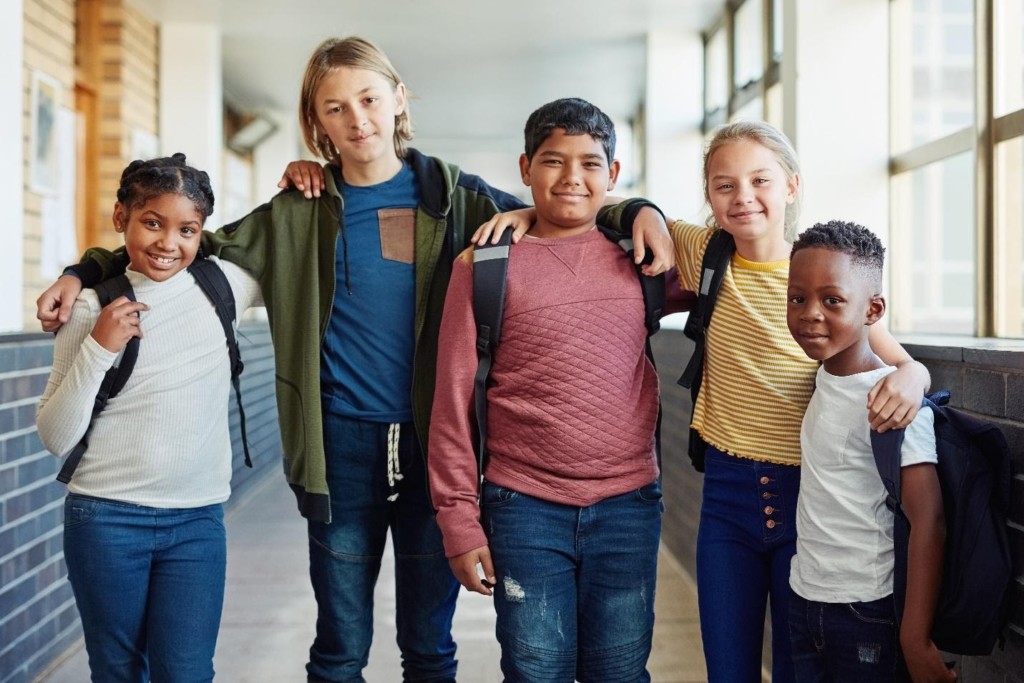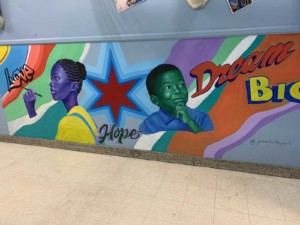Afterschool Programs: Serving as Centers for Support, Access, and Equity
Key Points
-
As children and families in their community adapt to the challenging circumstances and stressors created by the pandemic, afterschool programs continue to be a source of support.
-
Programs have aided in the provision of meals, connections to the community, and support for essential workers.

As children and families in their community adapt to the challenging circumstances and stressors created by the pandemic, afterschool programs continue to be a source of support. Programs have aided in the provision of meals, connections to the community, and support for essential workers.
Afterschool programs across the country quickly adapted and maintain meaningful connections for children and families who had been separated from their peers during the school closure. These programs are a lifeline for many families as they continue to:
- Provide childcare, academic tutoring, and other related services.
- Support for social and emotional well-being; collaborate with schools on hybrid learning environments.
- Create opportunities for project-based workforce and experiential learning opportunities.
- Feed hungry children and connect families to resources available on the ground.
Besides providing essential services for youth and families, out-of-school time programs have helped children catch up on the learning they have lost as they prepared to reenter school and other activities after a year of isolation. According to Afterschool Alliance, afterschool and summer programs during the pandemic have helped to:
- Close the achievement gap by providing students with more time for deeper learning and the extra help they need to recover from learning loss due to school closures and disrupted schedules.
- Address student mental health by connecting young people with caring mentors who are trained to help youth build healthy relationships and heal from trauma.
- Ensure child safety by partnering with schools to offer families a safe place for children to learn both during and beyond the school day, allowing parents to return to work or take time to seek employment.
- Support nutrition by feeding hungry children. The pandemic has exacerbated food insecurity and out-of-school time programs are seeing a significant increase in hungry children.
- Promote physical activity by encouraging physical health and wellness. Physical activity is especially important now as many students are in virtual or hybrid-learning and children have limited options for daily exercise.
- Address Inequities: Access to out-of-school time programs is not always equitable. In the United States, for every child in an afterschool program, three are waiting to get in. School-age children spend more than 80 percent of their waking hours learning outside of school, making afterschool and summer learning programs key to ensuring kids reach their full potential. Out-of-school time programs are embedded in neighborhoods throughout the nation, uniquely positioning these programs to help families through this pandemic. These localized programs ensure young people have access to safe, quality programs that offer expanded learning opportunities and nutritious meals, and connect parents with health care, employment, and other resources.
According to Afterschool Alliance, 78% of parents, who have their child enrolled in an afterschool program, state that it has helped them to keep their jobs during the pandemic. A notable example of the power of afterschool programs to effect change during the pandemic at the state level is the SC Afterschool Alliance (SCAA).
The SC Afterschool Alliance has a network of over 1,400 afterschool programs impacting over 100,000 K-12 students.
Antonio Boyd
SCAA’s mission is to raise awareness, increase sustainability, and promote the importance of quality afterschool and summer learning programs. The overall goal of the SC Afterschool Alliance (SCAA) is to establish a statewide network of diverse stakeholders that will guide, support, and enable quality afterschool services and policies for all children and youth. The organization represents over 1,400 individual and diverse organizations.
The SCAA has four main priorities:
- Education and Communication
- Advocacy
- Technical Assistance
- Partnerships and Collaboration
I was able to speak with Zelda Waymer, President, and CEO of the SC Afterschool Alliance about the innovative programs and services the alliance and its providers have delivered to children and parents during the pandemic.

She shared that as the pandemic evolved and progressed, schools across South Carolina grappled with the massive and uncharted task of bringing our students back into school buildings safely and preparing for an uncertain year ahead. We knew there would be a need for more support, staff, resources, and spaces to help students catch up, re-engage, and recover from the learning loss and social isolation. But families were struggling too—moms and dads were not able to return to work because their kids were still at home doing remote school. Many working families could not find or afford care for their school-age kids during the day.
The SC Afterschool Alliance has a network of over 1,400 afterschool programs impacting over 100,000 K-12 students. These network programs and staff have longstanding relationships with families and schools in every community across South Carolina. Afterschool programs were ready to help and offer immediate resources—including their facilities, staff, and connections—to address challenges parents face in getting back to work. Many of our local afterschool programs pivoted to remain open, continued to serve students and families. Our network program providers offered support in the following ways:
- Time – Afterschool programs expanded their time providing services all day. Afterschool and summer programs have always provided critical academic support and youth development services for K-12 students and their families outside of traditional school hours. When schools offered remote learning or a staggered schedule, these wraparound services were essential for allowing parents to work.
- Space – Network programs operate in a variety of settings, often moving between classrooms and community spaces. Afterschool programs expanded learning and engagement to include community centers, parks, libraries, and more. Providing safe places for students to learn remotely was critical for helping parents especially essential works and first responders return to their jobs and feel at ease knowing their children are safe.
- Staff – We provide additional staffing capacity, including professionals who are trained in positive youth development, online learning, and trauma-informed care. Having more staff was especially critical for keeping kids supervised and helping them recover from learning loss and the social isolation forced by the pandemic.
- Engaging parents and families – Many families were in crisis, need additional supports, and struggled to stay connected. Because of our programs’ deep relationships with families and community partners, and a long history of coordinating services to meet families’ economic, health, food, and other needs.
- Innovation – Afterschool programs were able to step in with flexibility and pivot quickly as school schedules and educational delivery systems shifted. Programs were able to offer safe, developmentally rich settings to provide new learning opportunities that engaged students in meaningful projects and activities correlated to academic achievement.
During the initial pandemic lockdown, The SC Afterschool Alliance reached out to the Arts in Basic Curriculum (ABC) Project at Winthrop University to address social-emotional development through the arts for the entire family. Every Friday, virtual dance classes, arts, and theater for all ages we hosted. In partnership with Claflin University, a Biomedical/Biomaterial Summer Internship was launched for rising 10th, 11th, and 12th graders. The program gave students an opportunity to live on campus for 5 weeks providing a true college experience. Students were also matched with a research scientist or chemist to work side by side in a research laboratory. Giving students a vision of someone that looks like them in the STEM field. The past two summers were virtual with several visits to Claflin’s Campus.
A special partnership with the University of South Carolina will allow 8,000 college students across eight campuses to be trained and serve as volunteer mentors and instructors in local summer and afterschool programs and receive credit hours for their civic engagement. College students are trained to deliver the College and Career Digital Badges. We are excited about the positive impact college students will have on our younger students. Students participating in these programs will have a greater connection to caring adults, greater support academically, fun STEM, and greater possibilities to succeed in life.
The recent investment of $1.3 Million dollars by the South Carolina State Department of Education in partnership with The Riley Institute at Furman University in a new afterschool and summer leadership learning program called SCALE will certainly aid to bring support, access and equity in afterschool education.






0 Comments
Leave a Comment
Your email address will not be published. All fields are required.